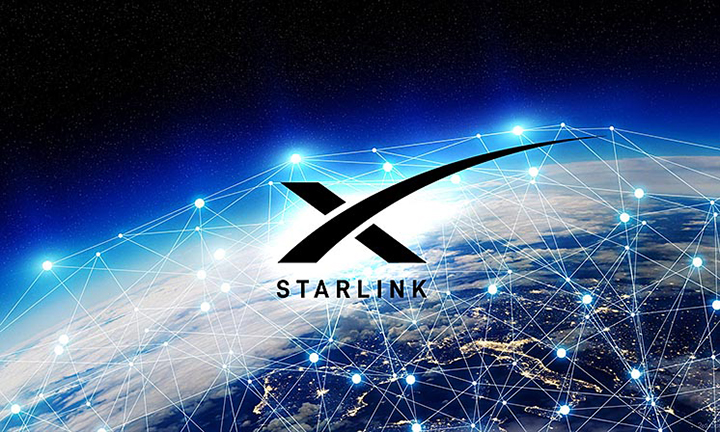SpaceX’s StarLink internet is coming to Australia! Here’s what you need to know to prepare!

Elon Musk’s SpaceX is committing to eventually bring high-speed broadband internet access across the world, regardless of anyone’s geo-location. Satellite internet is not a new technology, it’s been around for many years already. However, in terms of speed, it’s been lacking and in some cases, connections only get 2.4Kbps, which is approximately 30 times slower than 3G mobile internet.
As you can imagine, that’s not an acceptable speed these days especially when it’s mainly used for people in remote fields who can’t get access to a traditional connection. For example scientists in Antarctica who are researching in the area for weeks or months on end or farmers who are out in the countryside, not very close to civilization. SpaceX’s StarLink is looking to change this, not only for people in remote areas but as well as everyone else in the world.
StarLink has over 1,000 satellites that makeup (at the time of writing), one-quarter of all active satellites in the low-earth orbit (LEO), and is aiming to deploy 4,425 satellites to be up and running by 2024 and an end goal of 12,000 satellites. The more there is, the faster the connection and lower the latency will be, across the world.
StarLink aims to offer high-speed broadband access to anyone, anywhere on the planet. It’s been slowly released around the world and you can sign up right now in Australia for StarLink’s internet public beta testing which will roll out between mid to late-2021. Here’s what you need to know about StarLink.

What is Starlink?
Starlink is SpaceX’s plan to launch 12,000 satellites into LEO that offer high-speed, low-latency, cheap internet access to everyone possible around the planet. That’s the end-game. All you would need to use Starlink is: a Starlink dish receiver (what Elon Musk calls “a UFO on a stick”), a mounting tripod, and a Starlink modem.
Each satellite will communicate to four other satellites using lasers as they orbit around the Earth, in turn creating a ‘web’ of Ku-band and Ka-band broadband connectivity that’s as fast as the speed of light which surrounds our planet continuously, for all locations!
In order to beam connectivity back to your satellite, a huge network of ground-based stations will also be necessary. So although 12,000 satellites sounds like a lot, SpaceX will still have a lot of infrastructure to build.
StarLink will continue to grow over time. Their goal is to have about 8,000 satellites orbiting just 500km above the planet, and the remaining 4,000 orbiting much higher up, at around 1,200km.

How many people are currently using StarLink?
Currently, there are over 10,000 people that have enrolled in the public beta test which launched in 2020. These numbers currently account for users across the US, Canada, and the UK.
Their objective is to have StarLink designated as an eligible telecommunications carrier, worldwide. This would allow SpaceX to access million in funding from the Rural Digital Opportunity and increase the reach of its coverage.

How good is Starlink’s internet?
As their service is still in beta, it’s providing fantastic speeds and results for satellite internet.
Users are reporting download speeds of between 50 Mbps (megabits per second) to 150 Mbps and upload speeds of 20 Mbps. Latency is at or below 31 milliseconds (ms), based on 95% of measurements taken from users. Which is the same speed (besides a lower upload speed) as an NBN 100 plan and as it grows, the speeds will get faster, the upload speed will go higher and the latency will go down. If you’re a gamer, at the current speeds that StarLink is providing, you can be streaming, gaming and have YouTube open with next to no lag on your connection. It’s impressive considering they have only launched 1,000 out of their planned 12,000 satellites.
Some users are already reporting between 150 Mbps on their speed tests and Elon Musk recently tweeted that they’re aiming to double the speed of their service later this year to ~300 Mbps with around ~20ms latency. Which is already amazing! However, still far off from their expectation of a 10 Gbps (Gigabits per second) link but will be coming in time.

What is 'space internet'?
Space internet is simply satellite-powered Internet access. This isn’t a new thing, it’s been around for some time now. Telecommunication satellites mostly sit in a stationary orbit thousands of kilometres above Earth and follow the direction of Earth's rotation, so that it appears to stay in one place to serve a specific region. Their distance from Earth means there’s quite a bit of latency by 1 second (1000ms) or higher.
Actual internet access via existing satellites is extremely limited; Iridium’s LEO network offers data speeds of 2.4 kbps, and though that’s soon going to jump to 512 kbps, ironically, thanks to several dedicated rocket launches by SpaceX. It’s expensive and designed to serve companies and governments that need critical access in remote areas of the world such as container ships, deep-sea oil rigs, and scientists in the Antarctic, etc. However, not the mass market and furthermore, not with the speeds that StarLink is offering.
StarLink satellites will be approximately 60 times closer to Earth than your average satellite, and could also offer speeds of 10Gbps, which is faster than fiber optic internet.

Why is SpaceX getting into ‘space internet’?
If SpaceX can offer speeds of 10 Gbps to every single person on the planet and have better pricing than land-based networks, it could become a massive (if not the biggest) internet service provider in the future. With the fact that 50% of humans still have no internet access, you start to see why SpaceX is so interested in making the most of its own rocket launch capabilities.
It’s estimated that constructing StarLink could cost over US$10 billion, and there’s evidence that SpaceX expects StarLink could earn the company US$30 billion each year by 2025.

Is Starlink the only ‘space internet’ provider?
No, there are already many players in the game. There’s Amazon, who’s ‘Project Kuiper’ could see 3,236 satellites create a global broadband internet service sometime after 2021.
The world of satellite broadband is heating-up, and high-speed ‘space internet’ is increasingly looking like the future.
OneWeb – supported by Intelsat, Virgin Qualcomm, SoftBank and Hughes Networks Systems – intends to launch 640 satellites across 21 launches to create global broadband by 2021.
SpaceX’s StarLink is very ambitious, however, they will have direct competition. Only time will tell how well it’ll do.

So do I need a new router?
Well, it depends on a lot of factors. In most cases, you’ll be provided with a modem from their end as part of the plan. However, a lot of the time it’s a bare-minimum modem to get you up and running and it’s at that point you can decide if it’s enough for you, or you may need something else with much better range and be able to handle a lot more users on a single modem/router.
In this case, in preparation for StarLink internet which we think will be a massive success judging by what it’s already producing with just 1/12th of the satellites they’ve planned to launch. It’s going to be a no-brainer to upgrade your router. Whether you’re looking to get a beefy gaming router with Wifi-6 (AX WiFi) or want to cover your entire household with WiFi using a mesh system, then you certainly can!
- Check out our router section by clicking here.

- If you’re specifically after a WiFi-6/AX router, you can check them out here

- Or, if you’re interested in mesh systems (that also have WiFi-6), then please visit this link here.

For any help with modems, routers, or any networking products. Call our experts @ Wireless 1 on (02) 9687 8828 [Mon-Fri 8:30am-5:00pm] and they’ll be sure to help you out. You may also email us at [email protected]












